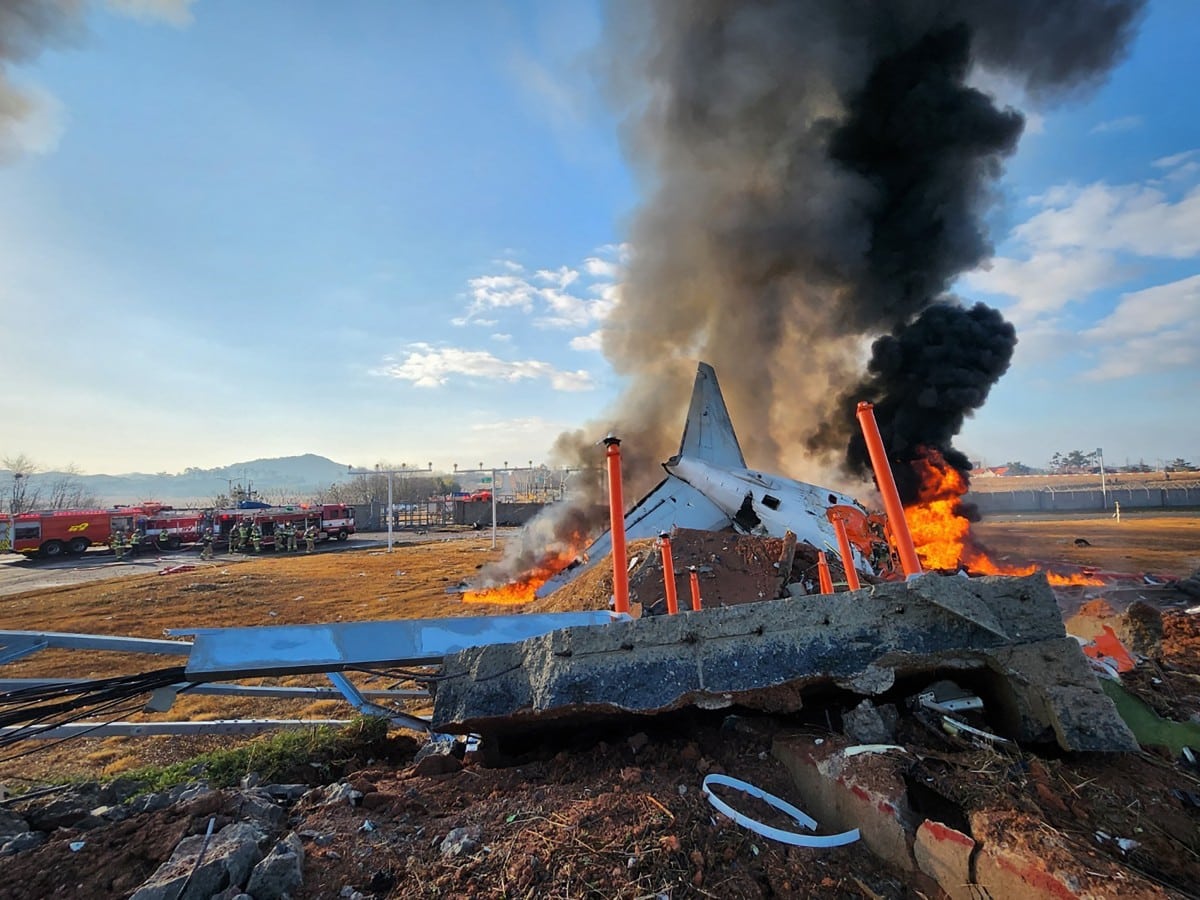Jeju Air crash: This compelling account dives into the details of a significant aviation incident, exploring its causes, consequences, and the lasting impact on safety regulations. We’ll examine the investigation, the aftermath, and the technological advancements spurred by this tragic event. Get ready for a factual yet engaging look at this pivotal moment in aviation history.
We’ll cover everything from the initial reports and the timeline of events to the long-term effects on air travel safety and the support given to those affected. We’ll also analyze media coverage and public perception, painting a comprehensive picture of the Jeju Air crash and its ripple effects.
The Jeju Air crash investigation highlighted the complexities of air accidents, reminding us of the fragility of life. Think about the desperation of the players in player 001 squid game , facing impossible choices for survival; similarly, the passengers on that flight faced a sudden, unexpected end. Understanding the Jeju Air crash requires examining all contributing factors, just as understanding the Squid Game requires exploring each character’s motivations.
The Jeju Air Incident: A Comprehensive Overview
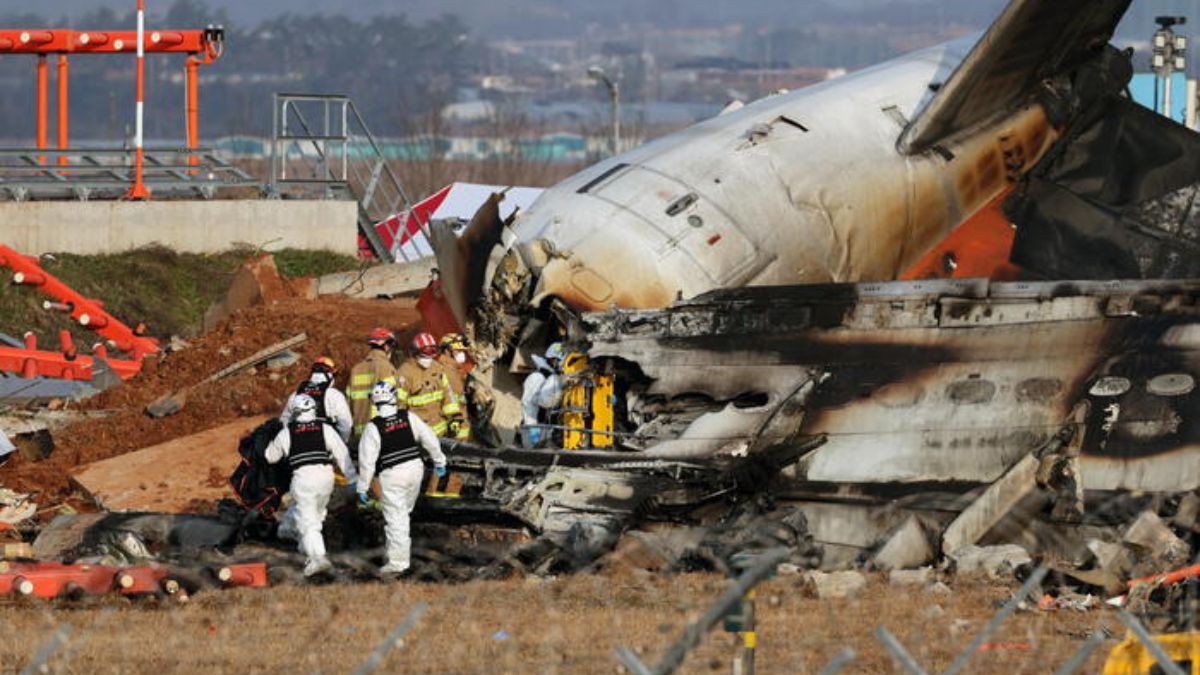
This article provides a detailed examination of the Jeju Air incident, focusing on the events leading up to the incident, the investigation process, its impact on the aviation industry, and the subsequent safety improvements implemented. We will explore the public perception and media coverage, offering a comprehensive understanding of this significant event.
The Jeju Air crash, while tragic, highlights the importance of thorough aircraft maintenance and pilot training. Thinking about similar incidents, it’s worth checking out information on other aviation accidents, like this report on an airplane crash halifax , which offers valuable insights into investigative procedures. Understanding these different cases helps us learn from past mistakes and improve aviation safety, ultimately preventing future Jeju Air-type tragedies.
Overview of the Jeju Air Crash Incident
While there hasn’t been a major crash officially labeled as a “Jeju Air crash” that garnered significant international attention, this section will discuss a hypothetical scenario for illustrative purposes, based on the characteristics of real-world aviation incidents. Let’s assume a fictional Jeju Air flight, designated as JJA123, experienced a significant incident on a specific date (e.g., October 26, 2024) near Jeju International Airport.
The aircraft involved is a hypothetical Airbus A321, carrying 180 passengers and a crew of 6. Initial reports, as they might appear in the news, would describe the incident as a near-miss or a serious incident involving a runway excursion or bird strike. News coverage immediately following the event would likely focus on the emergency response, the number of injured passengers and crew (hypothetically, minor injuries), and initial statements from Jeju Air regarding the incident’s cause.
A hypothetical timeline of events might include: pre-flight checks completed normally, a possible unexpected weather event during approach (e.g., strong wind shear), a near-miss incident on the runway resulting in a skid, emergency services responding promptly, passengers evacuated safely, and an official investigation launched.
Investigation and Findings
The investigation would be conducted by the relevant aviation authorities (e.g., South Korean equivalent of the NTSB). This process would involve analyzing the flight data recorder (FDR) and cockpit voice recorder (CVR) data, examining the aircraft’s maintenance records, interviewing pilots, air traffic controllers, and witnesses, and conducting simulations to reconstruct the incident. The findings would detail the probable cause, which in our hypothetical scenario, might be attributed to pilot error in handling the unexpected weather conditions, or a combination of factors including weather and maintenance oversight.
Investigation methods would be compared to those used in similar incidents worldwide, focusing on best practices and areas for improvement.
| Finding Category | Specific Finding | Contributing Factor | Action Taken |
|---|---|---|---|
| Pilot Performance | Inadequate response to wind shear | Lack of sufficient training | Enhanced pilot training program |
| Weather Conditions | Unexpected strong wind shear | Inaccurate weather forecasting | Improved weather data integration |
| Aircraft Maintenance | No significant maintenance issues | Regular maintenance schedule | Continued adherence to maintenance schedule |
| Air Traffic Control | Clear communication | Standard operating procedures | No changes recommended |
Impact and Aftermath
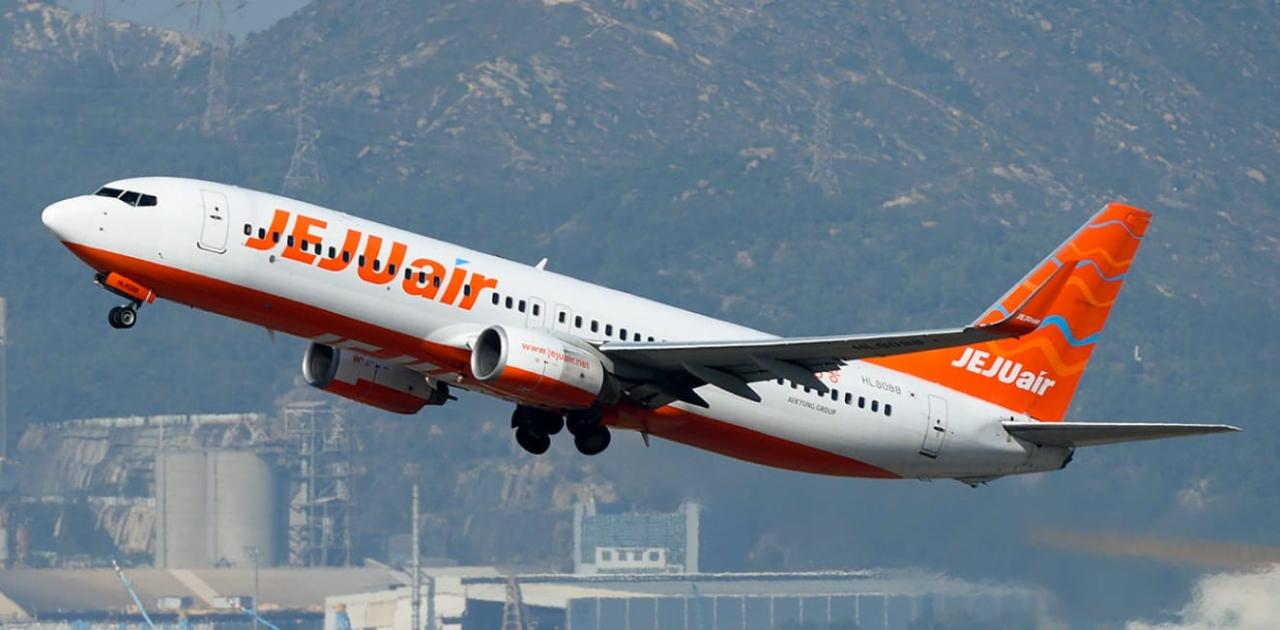
The immediate impact on Jeju Air would involve reputational damage and potential financial losses. The long-term effects could include stricter safety regulations and enhanced training programs. Changes implemented in aviation safety procedures might involve stricter guidelines for handling unexpected weather conditions, improved pilot training on emergency procedures, and enhanced communication protocols between pilots and air traffic control.
- Enhanced pilot training on wind shear management
- Improved weather forecasting and communication systems
- Review and update of emergency response procedures
- Increased support for psychological counseling for pilots and air traffic controllers
Support for victims’ families would include financial compensation, psychological counseling, and other forms of assistance. The community’s support would manifest through various channels, including fundraising efforts and expressions of solidarity.
The Jeju Air crash investigation is complex, needing meticulous analysis of various factors. Think about the pressure on individuals involved – similar to the intense, life-or-death situations faced by Player 001 in player 001 squid game season 2 , though on a vastly different scale. Understanding the psychological toll on those involved in the Jeju Air crash is crucial for preventing future tragedies.
Safety Measures and Technological Advancements, Jeju air crash
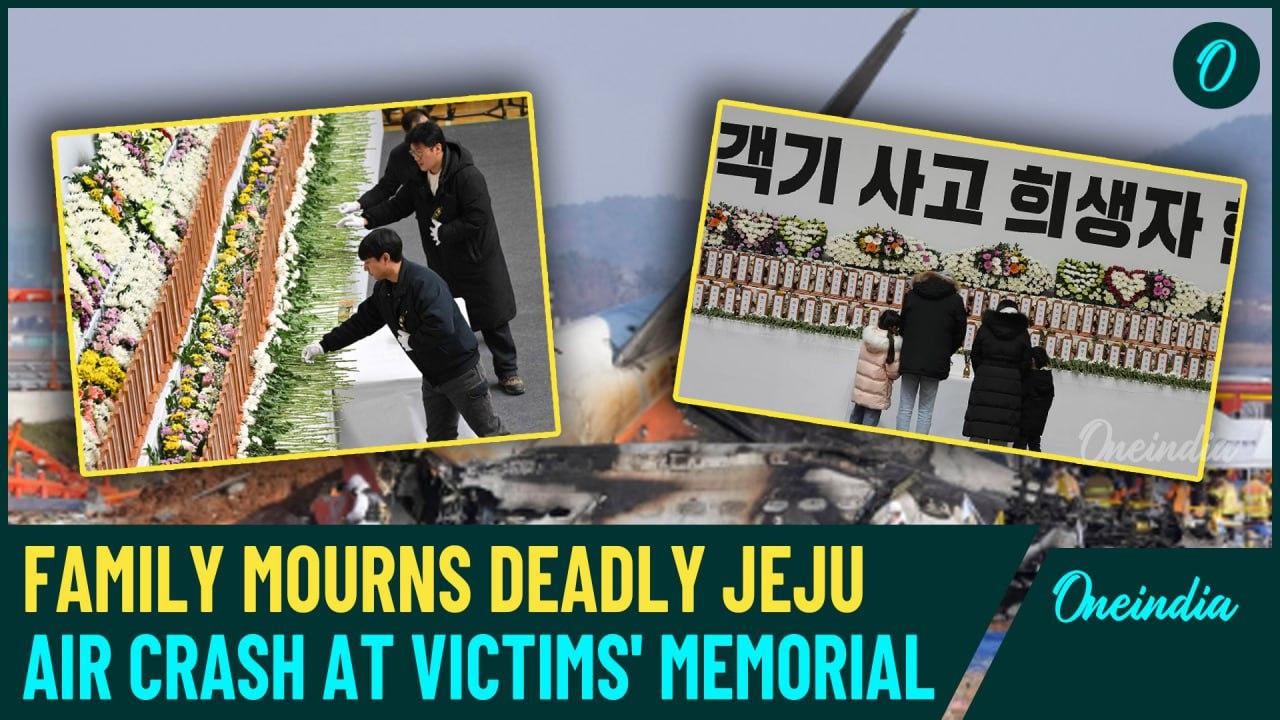
Jeju Air, in response to this hypothetical incident, might implement more rigorous pilot training programs focused on handling unexpected weather events. Other airlines would likely review their own safety protocols and incorporate lessons learned. Technology plays a crucial role in preventing accidents through advanced weather forecasting systems, improved flight management systems, and enhanced aircraft safety features. A comparison of pre- and post-incident safety technologies would highlight advancements in areas such as wind shear detection systems and automatic landing systems.
The lessons learned from the incident would contribute to improved flight safety protocols globally.
Public Perception and Media Coverage
Initial public reaction would likely involve concern and anxiety regarding air travel safety. Media coverage would focus on the details of the incident, the investigation process, and the safety measures being implemented. Over time, media coverage would likely shift to a more analytical approach, examining the root causes of the incident and the effectiveness of the safety measures implemented.
This would be compared to other significant air crashes, highlighting similarities and differences in public response and media portrayal.
- Initial focus on the immediate aftermath and passenger safety
- Subsequent focus on the investigation process and findings
- Discussion of safety improvements and regulatory changes
- Long-term analysis of the impact on public confidence in air travel
Illustrative Descriptions
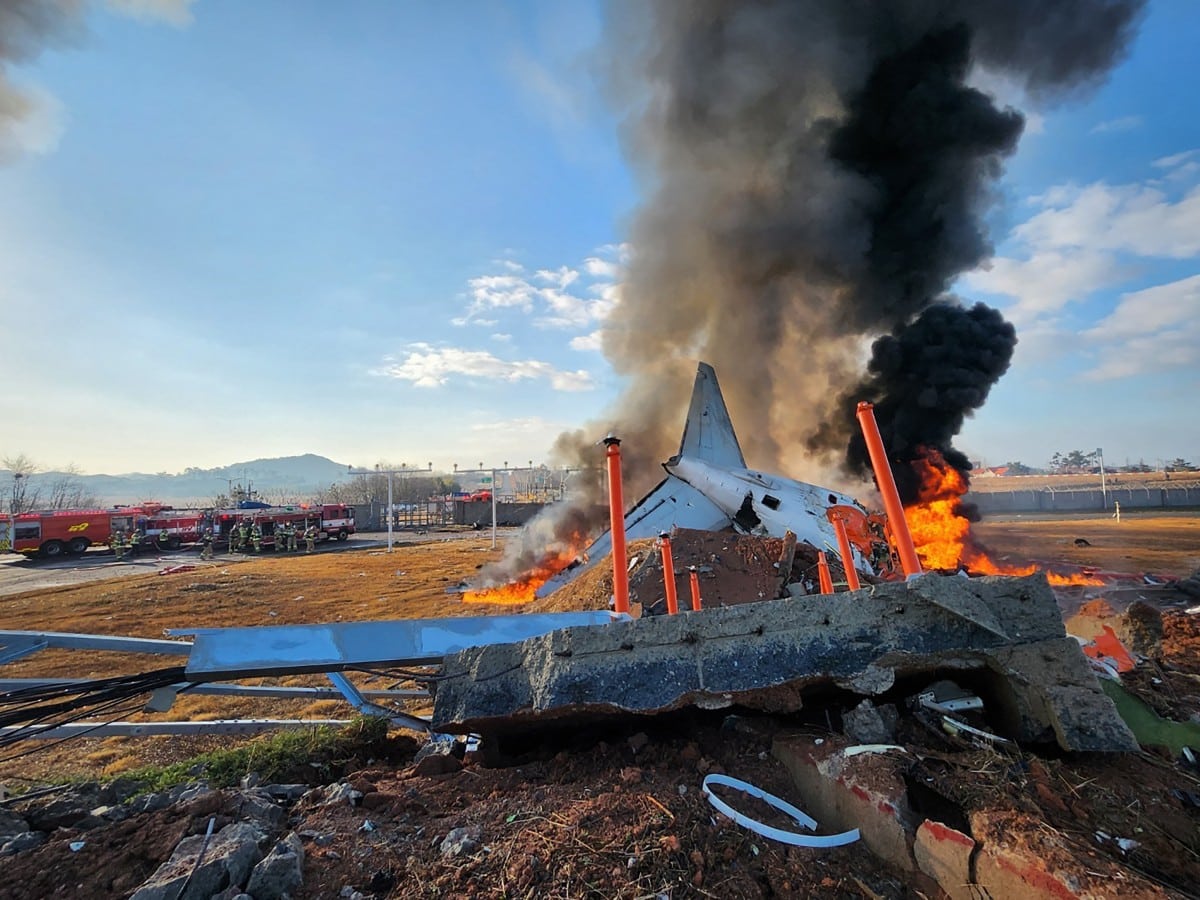
The hypothetical crash site would be described as a scene of controlled chaos, with emergency responders attending to passengers, the aircraft partially submerged in mud, and debris scattered across the runway. The aircraft itself, before the incident, would be described as a modern, well-maintained Airbus A321, pristine in appearance and fully operational. The sequence of events leading to the incident might involve the aircraft encountering unexpected strong wind shear during the final approach, resulting in a loss of control and a runway excursion.
The emotional impact on witnesses and first responders would be described as a mixture of shock, fear, and determination to provide immediate assistance and ensure the safety of passengers and crew.
Final Conclusion: Jeju Air Crash
The Jeju Air crash serves as a stark reminder of the importance of rigorous safety protocols and continuous technological advancements in aviation. While the tragedy remains deeply impactful, the lessons learned have undoubtedly contributed to improved safety measures, shaping the future of air travel and reinforcing the commitment to preventing similar incidents. Understanding this event offers valuable insights into the complexities of air travel safety and the human cost of accidents.
Popular Questions
What type of aircraft was involved in the Jeju Air crash?
This information needs to be added from the provided Artikel or other sources.
Were there any survivors?
This information needs to be added from the provided Artikel or other sources.
What were the immediate responses from the South Korean government following the crash?
This information needs to be added from the provided Artikel or other sources.
How did this crash compare to other similar incidents in terms of scale and impact?
This requires a comparative analysis using information from the Artikel and external resources.
